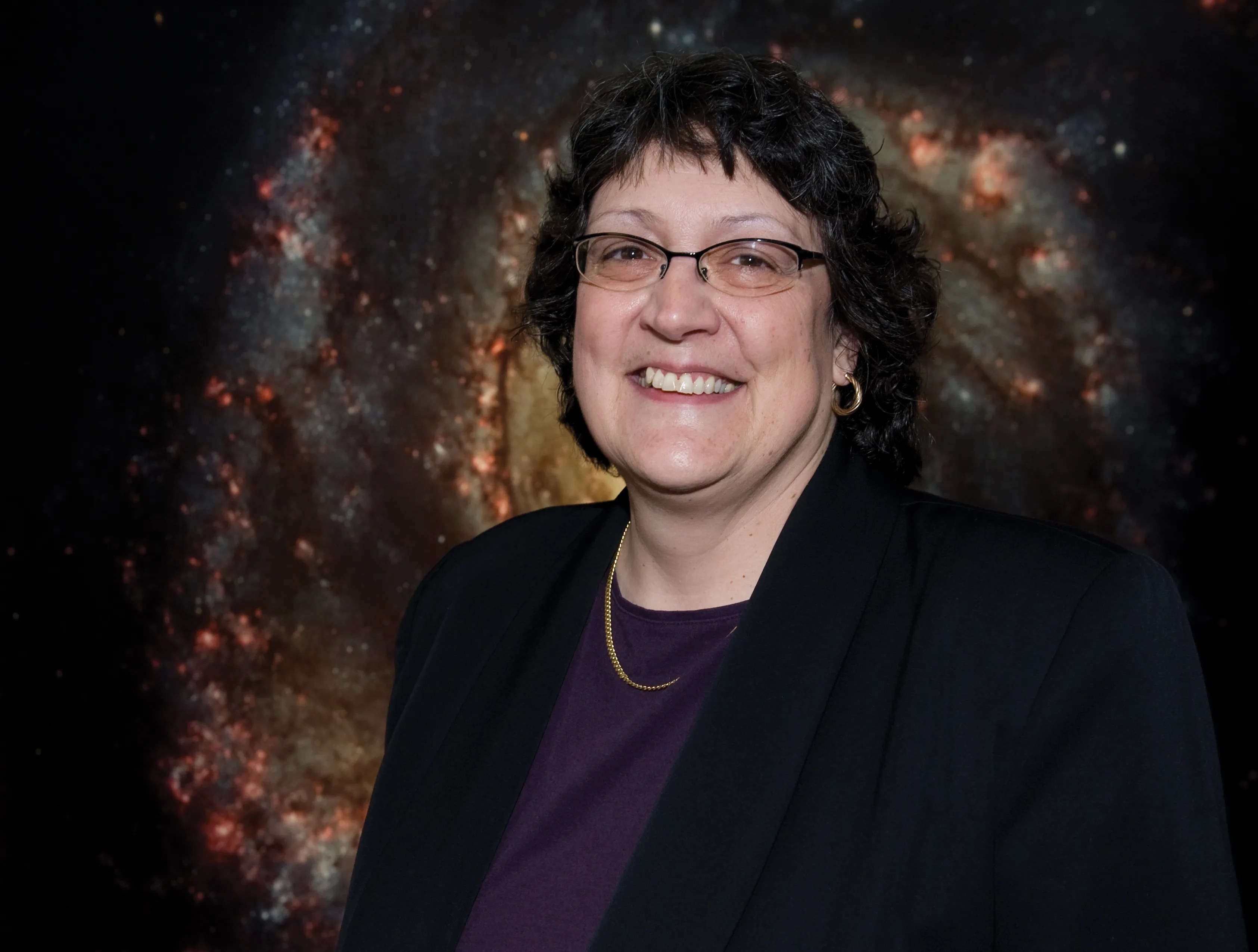
Dr. Olivia Lupie
Instrument Manager
Dr. Olivia Lupie still remembers the first time she saw a planet. She was living in Westchester County, New York, and just trying out her 10th birthday present — a 2.5-inch-diameter refractor telescope from Sears. “I trained the telescope on this bright ‘star’ halfway up from the horizon. I had no idea what it was going to look like. I looked through the eyepiece, focused, and I saw Saturn with its rings tilted about 45 degrees. Of course I knew all about Saturn — but the surprise that night filled me with such awe of the beauty and mystery and such excitement, that I almost felt I discovered it all over again.”
Olivia kept that sense of awe, graduating with a bachelor’s degree in astronomy from Villanova University and her master’s degree and doctorate in astronomy from the University of Wisconsin–Madison. She joined the Hubble Space Telescope program at the Space Telescope Science Institute (STScI) in Baltimore, Maryland, directly out of graduate school and worked there for over 20 years.
At STScI, she participated in a wide variety of projects. She led a team that verified Hubble’s basic telescope and instrument functions and made sure the telescope was performing as planned after launch. She also worked on teams that calibrated Hubble’s science instruments and designed and developed Hubble’s Wide Field Camera 3.
Olivia performed alignments of the science instruments and Fine Guidance Sensors (FGS) ― the latter of which are best known for their role in pointing the telescope. While two of the Fine Guidance Sensors point and hold on a target, the third can be used to perform science observations. That third FGS is often used for astrometry, or the science of determining the positions and motions of astronomical objects.
Olivia also worked on evaluating and understanding how light travels through the telescope and the exact positioning of its apertures. Apertures are the tiny openings that allow light from the telescope to reach the instruments. This work was especially critical for Hubble, which was built so its instruments could be swapped out for new models during servicing missions. If everything wasn’t perfectly aligned, light wouldn’t be able to enter.
It wasn’t as simple as taking exact measurements on the ground. Once in orbit, things would shift as gravity lost its grip on the telescope. Temperature changes would cause materials to expand and contract. Tiny distortions would alter the telescope’s mirrors. “These effects are very tiny but you still have to measure them on-orbit and correct for them,” Olivia said.
Working on Hubble’s science team was an active, busy career, she said. “Servicing mission preparations, new instruments, improved ground systems — there was always something new to do — new, challenging tasks. The other fantastic thing about the institute is the people you walk by in the hallway — famous astrophysicists you read about in school.”
But eventually, Olivia decided to join Goddard Space Flight Center in Greenbelt, Maryland, to experience the engineering aspects of Hubble and work on the final astronaut servicing mission to Hubble from the front lines.
“I grew up during the time of Mercury, Gemini and Apollo, and the manned space program was a big part of my introduction to astronomy,” she recalled. Though she’d pursued the science side, she’d kept her excitement for human spaceflight, and Hubble had the benefit of combining the two. “There came a time when I thought I should take advantage of this in the best way I can and experience more of the interplay between the manned space program and Hubble,” she said. “It was my chance to learn just a little bit more. The engineering is a whole other aspect of it and that’s exciting for me.”
As the Hubble Science Instrument Systems Manager, Olivia works on life extension initiatives for the telescope, finding ways to keep Hubble in top shape now that the servicing missions are over. These initiatives identify methods to reduce wear and tear on the telescope, such as reducing mechanism movements, and find ways to compensate for hardware that might fail.
Olivia has helped prepare in advance for problems and failures the telescope might experience, speeding up the recovery process so precious time to work on science observations isn’t lost. For instance, Hubble uses three gyroscopes for pointing, but they will eventually wear out. Hubble has backups aboard, but engineers have come up with ways to point the telescope using two gyros, and even one gyro. “If we were not ready, it would have taken a few years,” she said. “If we were only partially ready, it could take months. For one-gyro mode, we’re so ready at this point that we could go into it in a week.
“That’s been fascinating, a very creative process. Everybody sits down and brainstorms: ‘What do we do here, what can we do there.’ Our engineers are visionaries. There’s a whole list of life extensions we’ve implemented along the way.”
In her free time, Olivia helps judge prominent science competitions for children from kindergarten up, with goals that include bettering people’s lives and encouraging use of the scientific method. “Kindergarten to third grade are the most creative,” she said. “They don’t think inside the box. They don’t know there is a box. Some of these kids, you can tell they’re going to be great in the future. I know our precious planet will be in good hands.”

